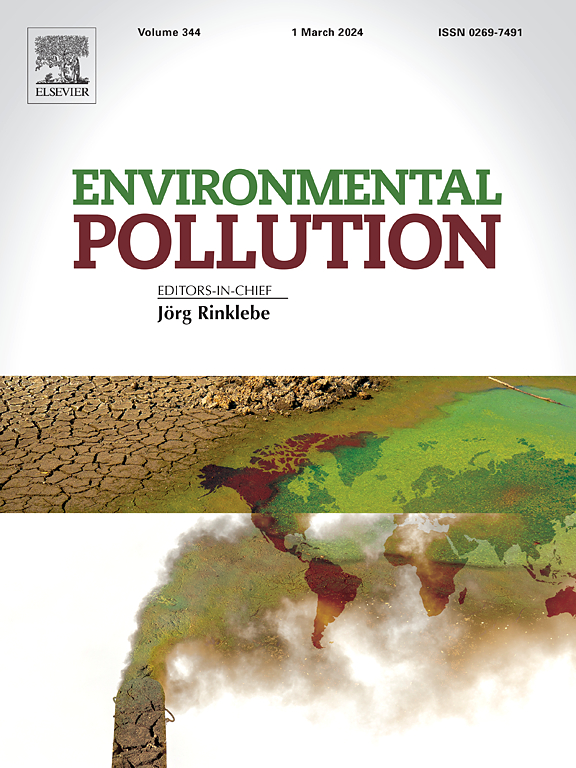Pesticide contamination in indoor home dust: A pilot study of non-occupational exposure in Argentina
IF 7.6
2区 环境科学与生态学
Q1 ENVIRONMENTAL SCIENCES
引用次数: 0
Abstract
Agricultural use of pesticides continues to rise globally. Argentina ranks fifth in use. While pesticides help yields, they also pose risks to human health and the environment. Indoor dust can present high pesticide concentrations, raising concerns about chronic exposure in non-farming households. Studies of pesticides in indoor dust are few worldwide. This pioneering study aimed to identify and/or quantify for the first time pesticide occurrence in indoor dust from urban residences in the Pampas Region, southeast of Buenos Aires Province, Argentina. Pesticide residues in indoor dust from 48 non-agricultural homes in the Pampas plain region were analysed. Study participants completed questionnaires on household demographics, pet ownership, pesticide use, gardening, and habits like leaving shoes outside. We detected 41 out of 49 targeted pesticides, including metabolites and banned compounds. Seven of the 49 tested are dual-use compounds (i.e. pesticide & biocide or veterinary applications). The synergist piperonyl butoxide, the dual-use imidacloprid, and “agricultural only” pesticides carbaryl, glyphosate, and atrazine were detected in all dust samples. Glyphosate, 2,4-D, atrazine, imidacloprid, carbaryl, tetramethrin, and piperonyl butoxide had maximum concentrations exceeding 1, 000 μg kg−1. Complex mixtures of up to 32 residues were found per sample. Questionnaire responses revealed that most participants brought shoes inside (60 %), almost all had pets (93 %), and 51 % had used flea repellents (mainly imidacloprid and fipronil). Approximately 48 % reported pesticide use in the past year, and 19 % reported exposure via their (non-farmer) jobs, e.g., via disinfection and weeding. These findings highlight the prevalence of pesticide residues in residential settings and the need for further research on long-term exposure and risks. Improved tracking of agricultural, household, and mixed-use pesticide applications is crucial, particularly in regions heavily reliant on agriculture.


求助全文
约1分钟内获得全文
求助全文
来源期刊

Environmental Pollution
环境科学-环境科学
CiteScore
16.00
自引率
6.70%
发文量
2082
审稿时长
2.9 months
期刊介绍:
Environmental Pollution is an international peer-reviewed journal that publishes high-quality research papers and review articles covering all aspects of environmental pollution and its impacts on ecosystems and human health.
Subject areas include, but are not limited to:
• Sources and occurrences of pollutants that are clearly defined and measured in environmental compartments, food and food-related items, and human bodies;
• Interlinks between contaminant exposure and biological, ecological, and human health effects, including those of climate change;
• Contaminants of emerging concerns (including but not limited to antibiotic resistant microorganisms or genes, microplastics/nanoplastics, electronic wastes, light, and noise) and/or their biological, ecological, or human health effects;
• Laboratory and field studies on the remediation/mitigation of environmental pollution via new techniques and with clear links to biological, ecological, or human health effects;
• Modeling of pollution processes, patterns, or trends that is of clear environmental and/or human health interest;
• New techniques that measure and examine environmental occurrences, transport, behavior, and effects of pollutants within the environment or the laboratory, provided that they can be clearly used to address problems within regional or global environmental compartments.
 求助内容:
求助内容: 应助结果提醒方式:
应助结果提醒方式:


